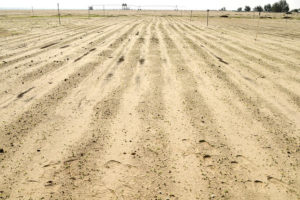Weather Extremes Will Be the Norm As World Warms
The World Bank says the Earth is on an unavoidable path towards a 1.5 C heat rise by mid-century -- but it could reach 4 C by 2100 unless immediate action is taken to avoid dire impacts for millions of people. Storm clouds gather off the coast of the Caribbean island of Barbados. Photo by Barry Haynes via Wikimedia Commons
Storm clouds gather off the coast of the Caribbean island of Barbados. Photo by Barry Haynes via Wikimedia Commons
By Alex Kirby, Climate News NetworkThis Creative Commons licensed piece first appeared at Climate News Network.
LONDON — As the planet continues to warm, heat waves and other weather extremes that happen perhaps once in hundreds of years — if ever — would become the “new climate normal”, a World Bank report says.
The consequences for development would be severe: failing harvests, shifting water resources, rising sea-levels, and millions of people’s livelihoods put at risk.
The World Bank report, the third in its Turn Down the Heat series, says even very ambitious mitigation action taken today will not stop global average temperatures reaching about 1.5 C above their pre-industrial level by the middle of this century. They are already 0.8 C higher, and likely — on present trends — to reach about 4 C by 2100.
Poor and vulnerable
“Today’s report confirms what scientists have been saying – past emissions have set an unavoidable course to warming over the next two decades, which will affect the world’s poorest and most vulnerable people the most,” said Jim Yong Kim, President of the World Bank Group.
“We’re already seeing record-breaking temperatures occurring more frequently, rainfall increasing in intensity in some places, and drought-prone regions like the Mediterranean becoming drier. These changes make it more difficult to reduce poverty. . . They also have serious consequences for development budgets.”
“Tackling climate change is a matter of reason,
but also of justice”
The report was prepared for the Bank by the Potsdam Institute for Climate Impact Research (PIK), and the UK independent thinktank, the Overseas Development Institute.
The report’s lead author, Professor Hans Joachim Schellnhuber, director of PIK, said: “Tackling climate change is a matter of reason, but also of justice. Global warming impacts in the next decades are likely to hit those hardest that contributed least to global greenhouse gas emissions: the global poor.”
Chain of impacts
Dr Bill Hare, founder and CEO of the Berlin-based not-for-profit organisation, Climate Analytics, is another lead author of the report. He said: “Assessing the entire chain of climate impacts — for example, how heat waves trigger crop yield declines, and how those trigger health impacts — is key to understanding the risks that climate change poses to development.”
Many of the worst projected impacts can still be avoided by holding warming below 2 C, the report says. It analyses the probable impacts of 0.8 C, 2 C and 4 C of extra heat on agricultural production, water resources, ecosystem services and coastal vulnerability across Latin America and the Caribbean, the Middle East and North Africa, and parts of Europe and Central Asia.
A common threat across the three regions is the risk posed by heat extremes. State-of-the-art climate modelling shows that “highly unusual” extremes — similar to the heat waves in the US in 2012 and in Russia and Central Asia in 2010 — would increase rapidly under a 4 C emission pathway. It also shows that the risks of reduced crop yields and production losses increase significantly above 1.5 C to 2 C.
Key findings across the regions include:
- Latin America and the Caribbean: Heat extremes and changing rainfall will damage harvests, water supplies and biodiversity. In Brazil, without further adaptation, crop yields could decrease by 2050 by up to 70% for soya and 50% for wheat with 2 C of warming. Ocean acidification, sea level rise, cyclones and temperature changes will affect coastal livelihoods, tourism, health, food and water security, particularly in the Caribbean.
- Middle East and North Africa: A large increase in heat waves, combined with warmer average temperatures, will put intense pressure on already scarce water resources, seriously affecting human consumption and regional food security. In Jordan, Egypt, and Libya, harvests could fall by up to 30% with 1.5 to 2 C warming by 2050. Migration and climate-related pressure on resources may increase the risk of conflict.
- Western Balkans and Central Asia: Melting glaciers and shifts in the timing of water flows will lead to less water resources in summer months and high risks of torrential floods in Central Asia. In the Balkans, a higher drought risk will affect harvests, urban health and energy generation. In Macedonia, yield losses are projected of up to 50% for maize, wheat, vegetables and grapes at 2 C warming by 2050.
The report adds that forest damage and thawing permafrost in northern Russia could release carbon and methane. With 2 C warming by 2050, methane emissions could increase by 20% to 30% across Russia.
Your support matters…Independent journalism is under threat and overshadowed by heavily funded mainstream media.
You can help level the playing field. Become a member.
Your tax-deductible contribution keeps us digging beneath the headlines to give you thought-provoking, investigative reporting and analysis that unearths what's really happening- without compromise.
Give today to support our courageous, independent journalists.






You need to be a supporter to comment.
There are currently no responses to this article.
Be the first to respond.